SPICE masters - can you help?
12


12
|
A pro bassist friend has asked for another Ginger pedal, but mentioned a cab sim in addition.
I can build a ROG Condor to fit in the enclosure as well, but it will need to be re-tuned for bass. Pedal parts does a PCB Condor that includes the Marshall mod - Celestion loaded 4x12 as well as the Jensen 4x10. http://pedalparts.co.uk/docs/CabSim.pdf I'm wondering how easy (or difficult) it would be to modify it to model an (for example) Ampeg 8x10 and a 2x15. Anyone any ideas, as I don't have a clue where to start? |
|
I remember another DIY cab sim project "multicab" or something and there was mention of a bass mod in the thread, but all the data was gone... might be time to try again to find info.
here we go: http://www.diystompboxes.com/smfforum/index.php?topic=70445.0 |
|
Thanks Cylens. As you say, an interesting read, but absolutely no clues whatsoever on how to adapt it for bass.
Anyone have any ideas? |
|
the ROG Condor's web page is really informative: http://www.runoffgroove.com/condor.html
in my opinion, you "just" have to change filter values of the 3 sections (notch, high pass, low pass) in order to match the response of requested cab... the main problem here would be to have access to such a response. I'm really interested in trying this and might make some measurements with my bass rig (EBS head and EBS 4*10 and 1*15), but I'm afraid I won't be able to do anything before a little while;.. |
|
Yes, that's what I thought too.
However, without a program like SPICE to model the changes to cap and resistor changes to match the speaker frequency curve, it's purely a guessing game - at least as far as my knowledge and experience is concerned. I think this is actually a great idea for a project. I guess a lot of people would be interested in a really good bass cab sim, so I really hope someone can help out. 
|
|
I've just installed and tested LTSpice, thanks to gaussmarkov's tutorial. I'll try the Condor schematic, this week end.
|
|
quick update: I've got the Condor simulation running in Spice and freq response is similar to ROG's website.
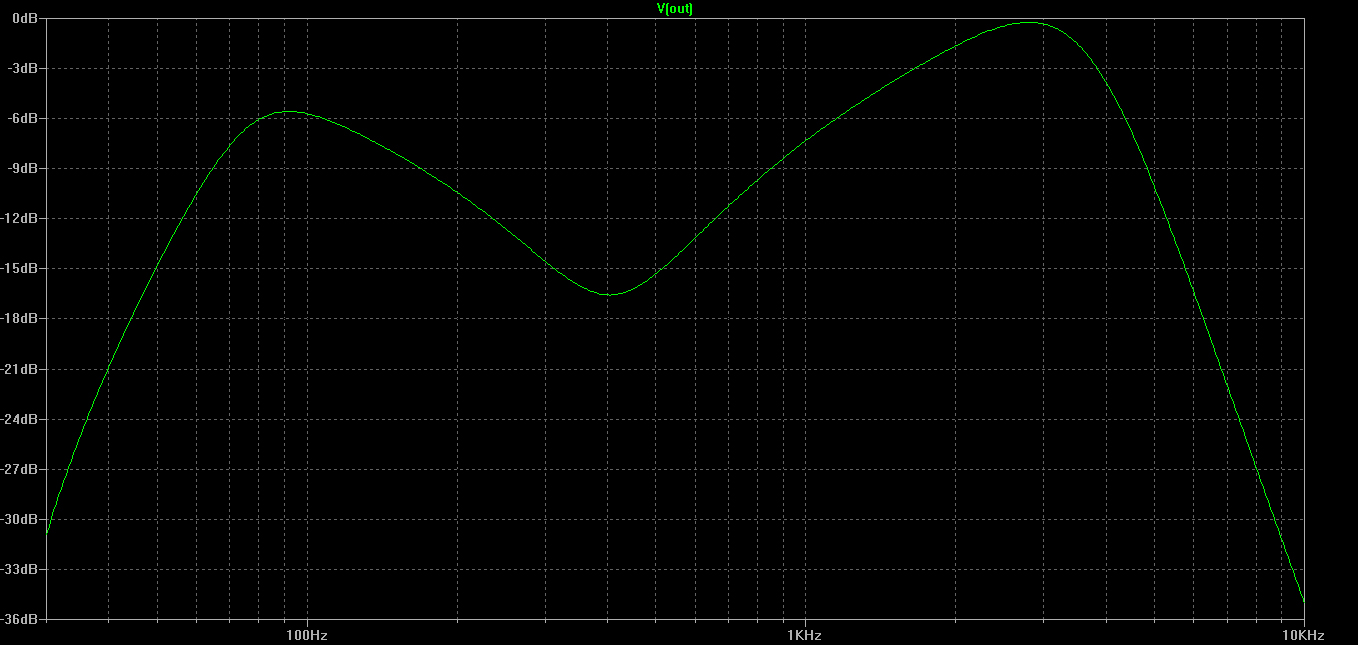 what we're lacking now is a bass cab frequency response to match... |
|
according to this post: http://www.diystompboxes.com/smfforum/index.php?topic=70445.msg566920#msg566920
let's assume that the OP did his homework, I can try to match this response, should be easy enough |
|
If you take sabro's layout:
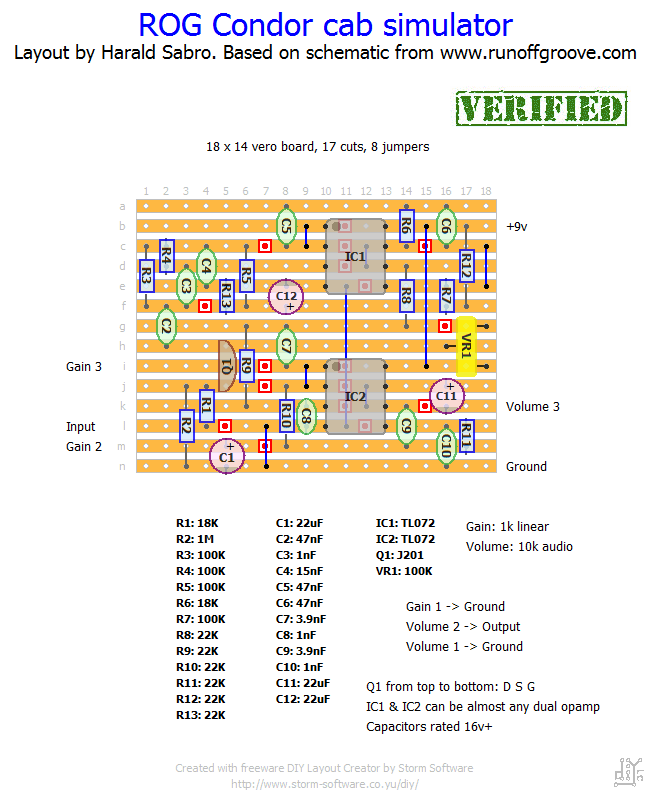 here's the changes that gave a response similar to the eminence bass speaker: -> R3 & R4: 120k, C3: 2.2 nF, C4 6.8 nF (that's for the mid notch, it's shifted from 400 to 250 Hz and "tamed") -> C5 & C6: 100 nF, R6: 15k (that's for the high pass filter and bass bump, moved from 90 to 50 Hz or so) -> R10, R11, R12 & R13: 33k (that's for the lowpass filter), the higher the resistance, the lower the corner frequency is. To me, you shouldn't focus on a specific response, though (a speaker response is different from the cab response, and moreover, overall response is affected by the mic characteristics and placement), but that would be a good starting point! Please let me know if you have a chance to try it. I will do so, but... later... Here's the freq response: 
|
|
Wow, thanks Cylens!
I can't believe you managed to get your head round this program so quick. Your computer skills are on a whole different level to mine! I downloaded it a while ago, but I still can't make head or tail of it. DIYLC made my head explode too - I still can't get to grips with that either. I did find this, which might provide some additional info. It's supposedly the frequency response curve for an Ampeg 8x10: http://billfitzmaurice.net/images/SPL/basscabs/Tens/2xAlpha10-1watt.gif I tried to add the image rather than a link, but it kept coming out too small to see properly. |
|
well, I was really interested in learning Spice and was working on the Condor circuit... I'm indeed a computer geek, I must confess... I have recording setups that work really great for me for both bass and guitar, my intent is to make 2 pedals to emulate those setups.
I'm surprised about the 810 response: most overdrives/distorsions sent to a "filter" with such a response will sound reeaaaallly bad (due to the lack of treble attenuation) I've put my hands on miked 810 Impulse response and the frequency response obtained is really different (and varies a LOT from one mic to another...) As a sound engineer I just choose the microphone according to the sound and then choose the position of the mic that suits best. My take on adapting the condor for bass would be to choose the components that make it sound best to my hears! If you intend to use the cab sim after the Ginger, the high end response won't matter much: the Ginger circuit already features treble roll off. When I have the time, I'll build a condor and socket all the key components and make soundclips so you can hear how different responses sound. |
|
I've only just finished populating the board for the Ginger. I have used some of the SMD 5457 JFETs I got from Bitsbox recently, so this has been a bit of learning curve for me, trying to work out how best to accomodate those.
I'm fully au fait with the principal of a cab emulator, but like you, I'm maybe a little sceptical as to how accurate they need to be, to sound right. As you say mic placement, mic voicing, room characteristics, amp choice etc. can make a huge difference. I will build a Condor up soon with the changes you suggest, but as I do not even know anyone with an Ampeg, I have no way of knowing if it will end up sounding like one. Thanks for all your hard work though! 
|
|
I've been thinking about it last night, I'll try to figure out if it's possible to have a more versatile solution, I'm thinking about rotary switches for corner frequencies for the low pass, high pass and mid notch... I'll see if it's possible and might build it soon (like... soon!)
|
Re: SPICE masters - can you help?
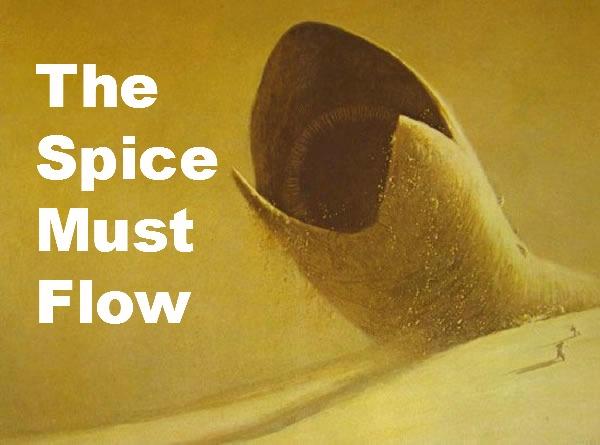
|
|
indeed!
quick update: I've got a vero ready (well, drawn) for a version with: 3 positions high pass and low pass filters: 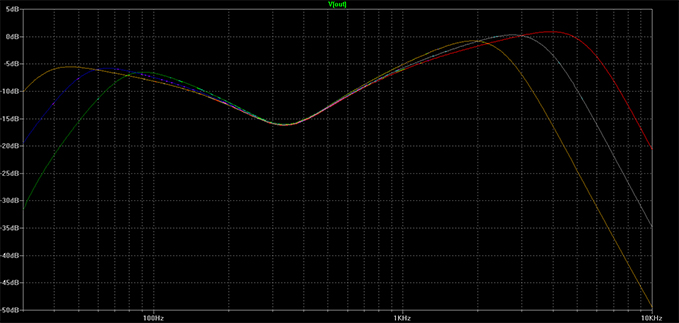 3 position mid notch depth:  and continuous mid notch frequency: 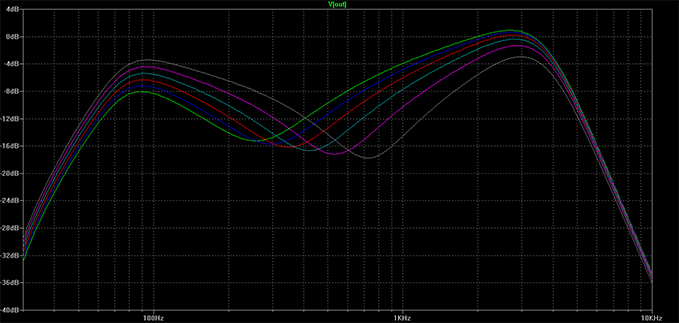 I am skeptical about the interest of such a beast, but it made me learn how to use LTSpice! |
Re: SPICE masters - can you help?
|
That's actually really cool! I can imagine that a cab sim with a number of tweakable parameters would be interesting to a number of people.
Through all the worry and pain we move on
|
|
Well, I've ordered the missing components (stereo pot for the mid notch freqency and 4p3T rotary switch for the lowpass filter, we'll see how it behaves "in real life"!
|
|
In reply to this post by cylens
"I am skeptical about the interest of such a beast, but it made me learn how to use LTSpice!"
I think it is a case of "If we build it, they will come". Sometimes people don't ask ask for something, because they know it does not exist. I can see this being potentially extremely useful to anyone wanting to record bass parts direct to desk. It could be a go-to choice for studio engineers, if it works well. Don't forget, my friend asked about a cab sim for bass, because he could not find one, and when I searched neither could I. Awesome work Cylens! |
|
This post was updated on .
yes, of course. I'm well aware of the specific need for a good bass cab sim for bass players! think about the output of the pedalboard going straight to the PA when no miking is available... Switch the fuzz on, and "enjoy".
it's the "ultra flexible" side of it, I'm skeptical about: it can cover guitar and bass applications. As a geek, myself, it will be useful, but I think having 6 controls (gain, volume, HP, LP, Mid freq and depth) might be a bit "overkill"!! but a very useful platform for experimenting, for sure. The vero is definitely NOT verified (I only made one "pass", so there are certainly errors) and I've chosen to make daughterboards for the switchable components. (and I don't even know why I haven't used a TL074 in place of the 2 TL072s...) 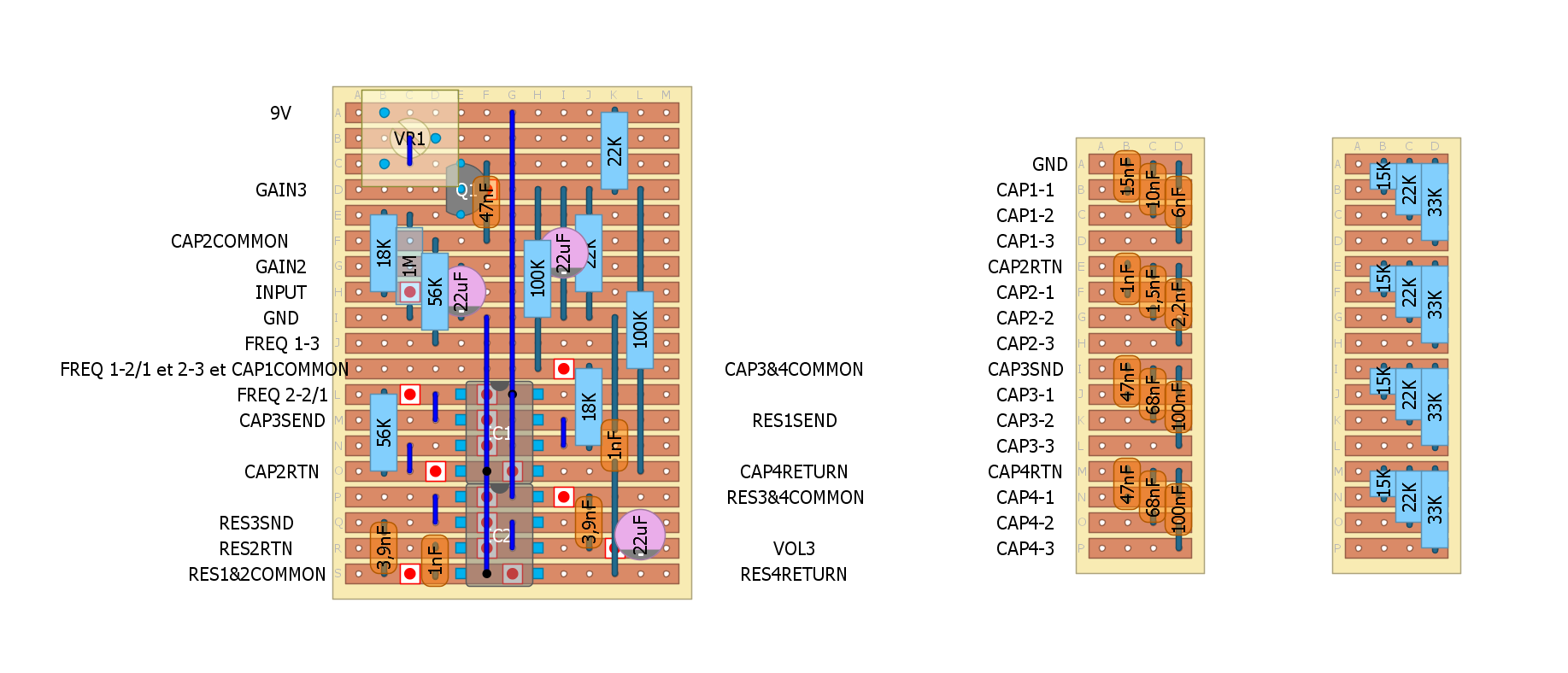 If it works OK, I'll certainly have a few PCBs fabbed (maybe with a balanced output, too). |
|
quick update, as i finally built it: it works great!
|
«
Return to Open Chat
|
1 view|%1 views
| Free forum by Nabble | Edit this page |

